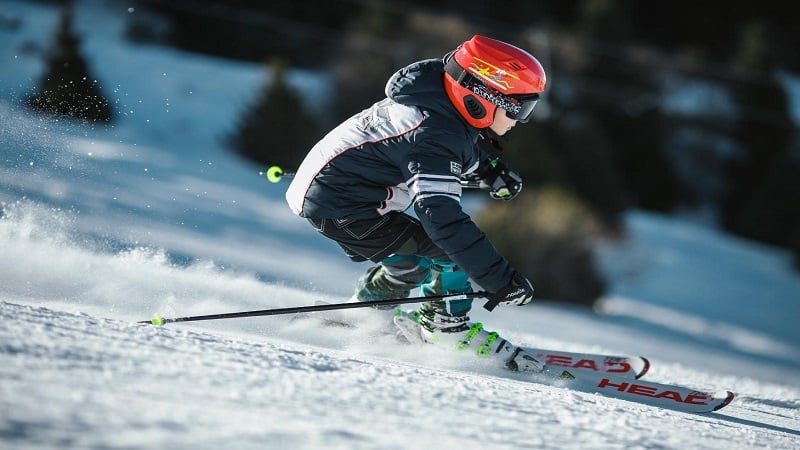Skiing is one of my favorite winter activities, but there’s nothing worse than the discomfort of tight ski boots. If you’ve ever felt that pinch after a long day on the slopes, you know how crucial it is to find the right fit. Luckily, stretching your ski boots can make all the difference in your comfort and performance.

Understanding Ski Boot Fit
Understanding ski boot fit is crucial for enjoying a day on the slopes. Properly fitted boots not only enhance comfort but also improve control and performance while skiing.
Importance of Proper Fit
Proper fit in ski boots prevents discomfort and foot fatigue. When boots fit well, they provide the necessary support and responsiveness, allowing me to maneuver easily on the mountain. With the right fit, I experience better energy transfer from my feet to the skis, which leads to improved balance and stability. A snug yet comfortable fit helps prevent blisters and cold feet, making all-day skiing a pleasure instead of a chore.
Common Fit Issues
Common fit issues can derail both comfort and performance. Here are a few that many skiers, including me, encounter:
- Too Tight: Skis can pinch or restrict circulation, causing pain and numbness, which ruins my skiing experience.
- Too Loose: Loose boots can lead to a lack of control, making it challenging to steer and maintain balance.
- Inadequate Width: Boots that are too narrow can create hot spots on my feet, leading to discomfort during long runs.
- Poor Ankle Support: Insufficient support around the ankles can cause instability, making it hard to navigate tricky terrain.
Being aware of these issues helps me choose my next pair of ski boots wisely, ensuring I stay comfortable and focused on enjoying the snow.
Methods for Stretching Ski Boots
Finding the right methods for stretching ski boots can transform your skiing experience. Here are some effective techniques I’ve discovered along the way.
Professional Boot Fitting
Professional boot fitting involves visiting a trained specialist who understands the mechanics of ski boots. Boot fitters assess the shape of your foot, the volume of your instep, and the exact fit you need. They use tools like heat molding to soften the boot shell, allowing it to conform to your foot’s shape. Many pros also employ specialized stretching tools that target specific pressure points, ensuring the most comfortable fit. This tailored approach not only alleviates discomfort but can also enhance control and performance on the slopes.
DIY Stretching Techniques
If professional fitting isn’t an option, several DIY methods can help stretch ski boots at home:
- Heat Method: Use a hairdryer to heat specific tight areas of the boot. Aim for a few seconds; don’t overheat it. Once warmed, put the boots on and walk around. The heat helps the material relax, conforming better to your feet.
- Ski Boot Stretchers: Purchase ski boot stretchers that you insert into the boot overnight. These devices apply gentle pressure, stretching the boot material. This method’s great for addressing tight spots across the forefoot or instep.
- Freezing Method: Fill zip-lock bags with water, place them inside the boots, and freeze them overnight. As the water turns to ice, it expands, gently stretching the boot material. Remove the bags once frozen, and let the boots thaw before trying them on.
- Thick Socks: Wear thick socks while skiing or around the house. The added cushioning stretches the interior of the boots over time, improving comfort.
- Walk Around: Simply wearing your ski boots at home helps. Walk around in them for short periods, gradually increasing the duration. This method breaks in the boots and stretches them naturally.
Using these techniques helps create a more comfortable fit, improving your overall skiing experience on the mountain.
Tools and Materials Needed
For effective ski boot stretching, I’ve found a few essential tools and materials make a significant difference. Utilizing these items can enhance comfort and performance on the slopes.
Stretching Sprays
Stretching sprays are designed to soften the outer shell of ski boots, making them easier to stretch. I recommend looking for sprays specifically formulated for ski or snowboard boots, as they penetrate materials effectively. To use the spray, simply apply it to the tight areas of the boot. Wait a few minutes for it to absorb, then wear the boots for a short period, allowing your body heat to help mold the material to your feet. This method can provide quick relief and transform those painfully snug spots.
Boot Stretchers
Boot stretchers are handy tools that work wonders for snug ski boots. These devices usually consist of a two-way or four-way stretcher that fits inside the boot. To use a boot stretcher, insert it into the tight area and turn the knob to apply gentle pressure. Leave the stretcher in place for several hours or overnight, allowing the boot to expand gradually. This method proves useful for addressing localized tight spots, ensuring a more comfortable fit during those exhilarating runs.
Step-by-Step Guide on How to Stretch in Ski Boots
Stretching ski boots can transform a painful fit into a comfortable experience, allowing for an enjoyable day on the slopes. Here’s how to properly stretch your ski boots.
Preparing Your Boots
- Clean your boots: Wipe off any dirt or debris from the exterior, focusing on areas near the buckles and seams. Keeping boot surfaces clean prevents scratches and helps with better heat distribution during stretching.
- Gather your materials: Have stretching sprays, a hairdryer, and a boot stretcher ready. These tools will help effectively target tight spots and adapt the boot shape to your feet.
- Identify tight areas: Wear the boots and stand in them for a few minutes. Take note of any pressure points or discomfort areas that may require extra attention.
Applying Stretching Techniques
- Use heat: Aim a hairdryer at the tight areas while flexing your ankles and feet. Keep the dryer about six inches away, moving it around to prevent damage. Heat the boots for about 30 seconds to soften the material.
- Utilize stretching sprays: Spray the tight areas evenly with a stretching spray designed for ski boots. Allow a few minutes for the spray to penetrate the material.
- Incorporate a boot stretcher: Insert the boot stretcher into the tight area and adjust it according to the level of stretch needed. Leave the stretcher in for several hours or overnight for best results.
- Try the freezing method: Fill resealable plastic bags with water and place them inside your boots. Freeze the bags overnight, which expands and softens the material as the water freezes. Remove the bags and let the boots thaw for a better fit.
- Walk around in your boots: Put on thick socks for extra padding, then wear your boots indoors. Walking around helps break them in gradually, molding them to your feet.
Tips for Maintaining Comfort
Finding comfort in ski boots enhances the overall experience on the slopes. I prioritize a few key strategies to ensure my boots feel more enjoyable throughout the day.
Regular Boot Adjustments
Regular adjustments keep my boots fitting snugly throughout the season. I periodically check the buckles and straps for proper tension, making sure they aren’t too loose or overly tight. I also take my boots to a professional fitter at the start of each season to address any wear and tear or changes in fit. Regular maintenance can help prevent discomfort before hitting the slopes.
Choosing the Right Socks
Choosing the right socks significantly impacts comfort. I opt for moisture-wicking, thin ski socks, as they provide warmth without adding bulk. These socks help reduce friction, preventing blisters and discomfort. I avoid cotton socks since they retain moisture, which can lead to cold feet. Investing in quality ski socks with cushioning in key areas offers extra support and comfort during long days on the mountain.
Conclusion
Finding the right fit in ski boots can truly make or break your time on the slopes. I’ve learned that a little stretching can go a long way in transforming discomfort into a seamless skiing experience. Whether you opt for professional boot fitting or try some DIY methods at home, taking the time to ensure your boots fit well is worth it.
Remember to keep an eye on your gear and make adjustments as needed. With the right approach to stretching and maintenance, you’ll be able to enjoy every moment on the mountain with comfort and confidence. Happy skiing!










